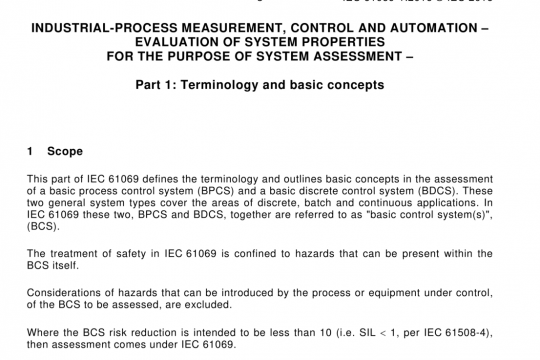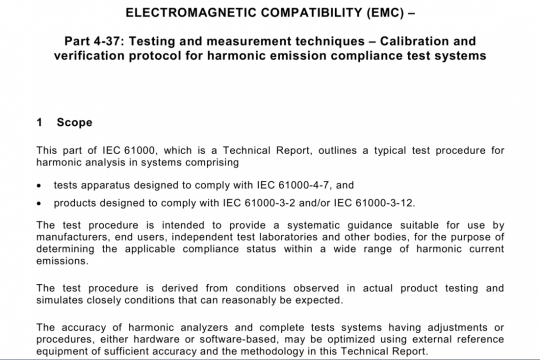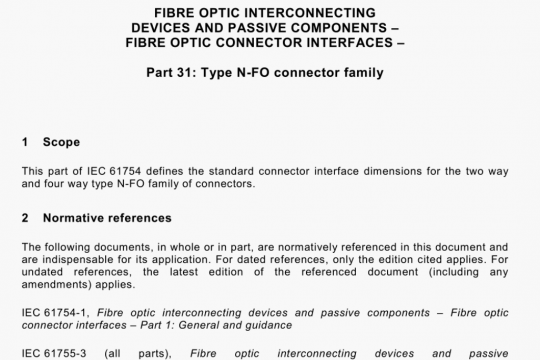EN IEC 63009 pdf free download
EN IEC 63009 pdf free download.Ultrasonics – Physiotherapy systems – Field specifications and methods of measurement in the frequency range 20 kHz to 500 kHz.
The numbers given in brackets are the tolerances defining the range of acceptable values for the results of either the type testing reference measurements specified in Clause 7 or the routine measurements specified in Clause 8. If the published tolerance requirement cannot be met, then the 95 % confidence level that is achievable should be reported. It shall then be demonstrated that the reported value, when incorporated with the tolerance so as to produce the “worst case” value, remains within the range of acceptable values, as specified in IEC 60601-2-5. Please see guidance provided in Annex A of this document.
The ambient temperature range shall be specified for the parameters specified above. The range of line voltages shall also be specified.
For ultrasonic physiotherapy equipment using a treatment head capable of operating at more than one nominal value of acoustic working frequency, the parameters listed above shall be specified for each nominal value of acoustic working frequency.
In addition, for ultrasonic physiotherapy equipment which can use an attachment head, the parameters listed above shall be specified for each combination of attachment head and treatment head.
NOTE This document does not contain requirements relating to safety: these are covered in IEC 6060 1-2-5. Guidance on performance and safety can be found in Annex A of this document.
6 Conditions of measurement and test equipment used for field measurements
6.1 General
All measurements undertaken in water shall be under approximately free-field conditions at a temperature of 22 °C ± 3 °C.
If measurements are carried out at any other temperature, a test shall be undertaken to show that the results, determined in accordance with 7.6 and 8.6, are not dependent on the temperature at which the tests were undertaken.
Degassed water shall be used for the measurement of ultrasonic power, see 7.2. Measurement systems should be characterized to ensure no cavitation is present.
Degassed water is essential to avoid cavitation when the physiotherapy units are operated at or near full output power. Information on preparation of water suitable for measurements of physiotherapy output may be found in IEC TR 62781 [8] and in [9]. Even with degassed water it is possible that cavitation may occur, especially at lower frequencies. Measurements should be done in a manner to avoid cavitation as a general rule.
All measurements shall be made after the warm-up period specified by the manufacturer. If no such period is specified, a period of 30 mm shall be used.
When making field measurements at lower powers or intensities and scaling upward with power, care should be taken to ensure that the voltage supply itself is linear in the frequency range of interest and shows no hysteresis.
6.2 Test vessel
The test vessel used for all hydrophone measurements shall be large enough to allow the immersion of both the hydrophone and the treatment head as a whole or in part (radiating surface only). The tank size should conform to IEC 62127-1.
The relative position and angular orientation of the treatment head and hydrophone should be adjustable for the purposes of alignment in accordance with IEC 62127-1. Full degrees of freedom of movement of both may be provided, although the minimum recommendation is that either the treatment head or the hydrophone should possess three independent degrees of translational movement. The measurements should be performed to achieve uncertainties as specified elsewhere in this document, which may require that the walls of the test vessel as well as the mounts used to hold the treatment head and the hydrophone be lined with absorbers or angled reflector(s) and absorber(s) of higher absorption and lower scatter. Various methods can be used to determine adequacy of the test vessel set-up.EN IEC 63009 pdf download.




